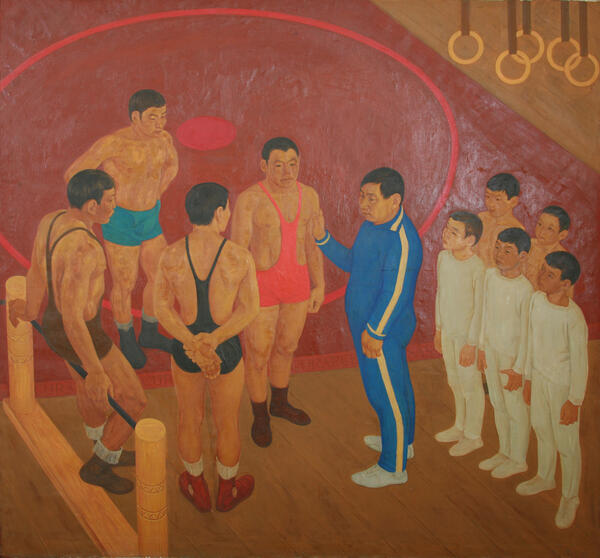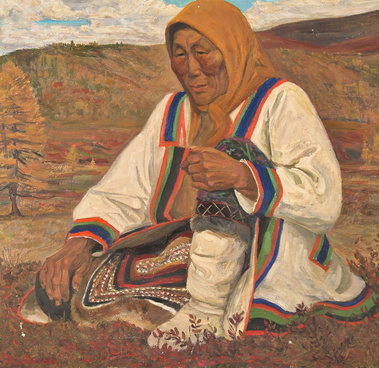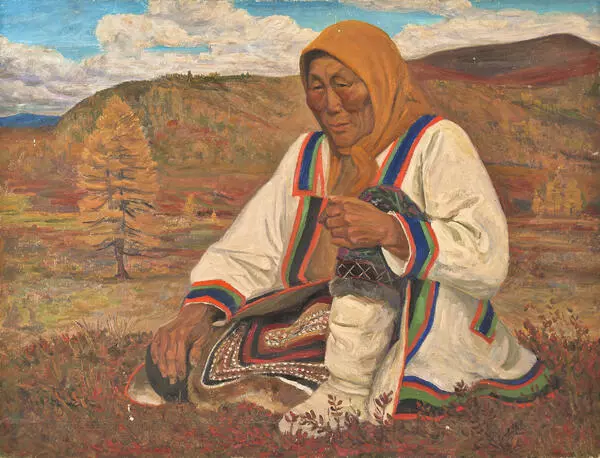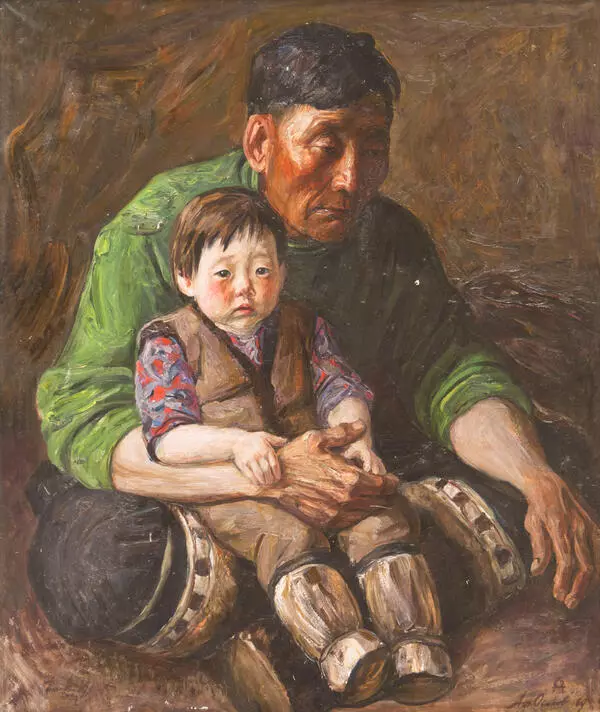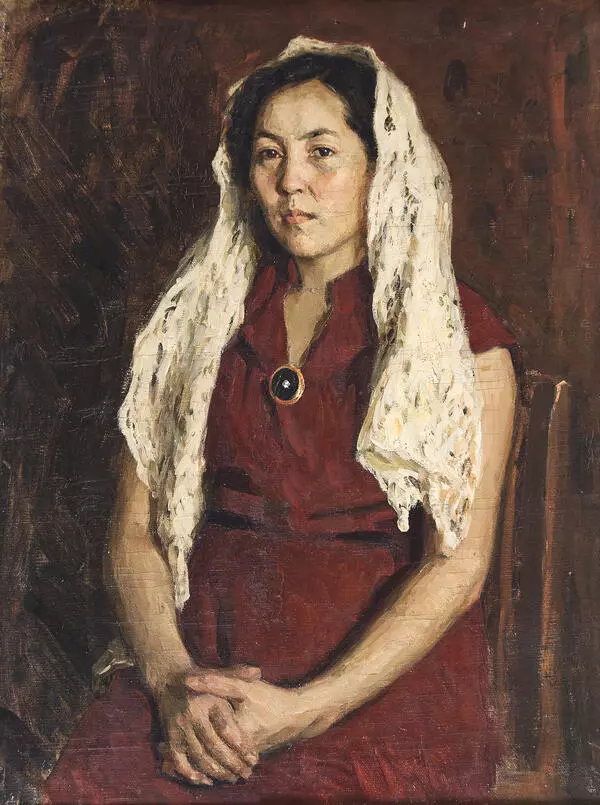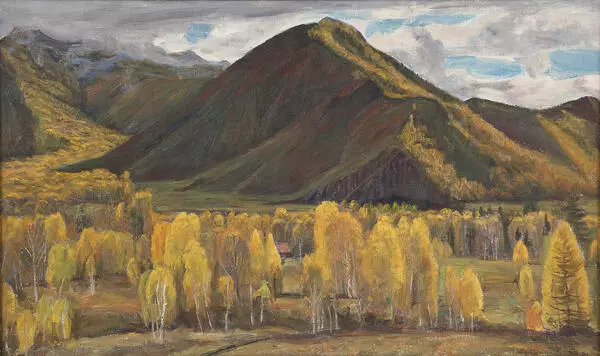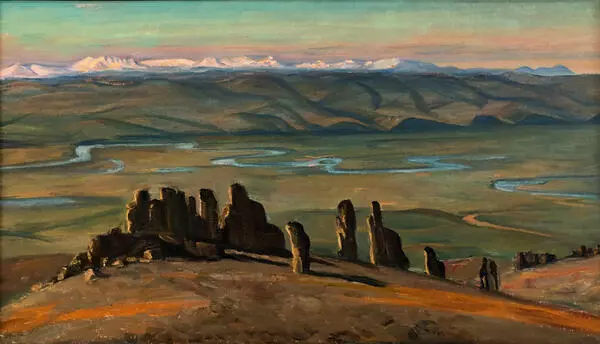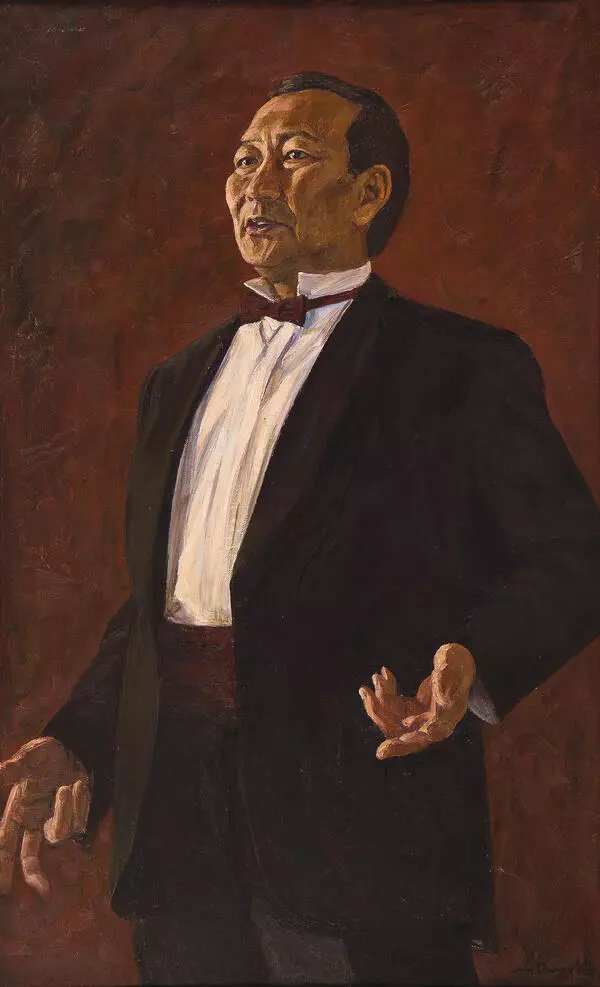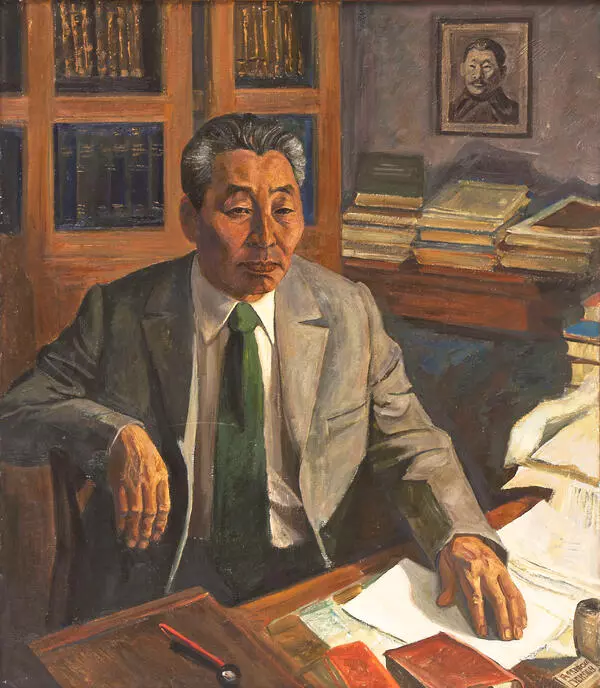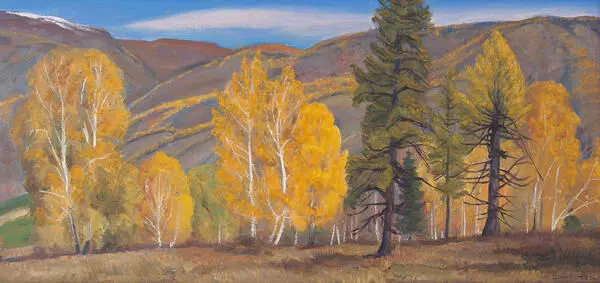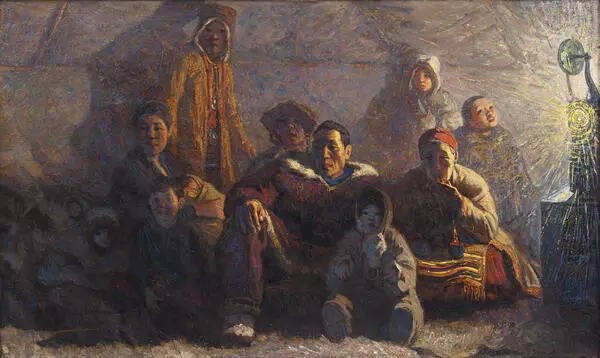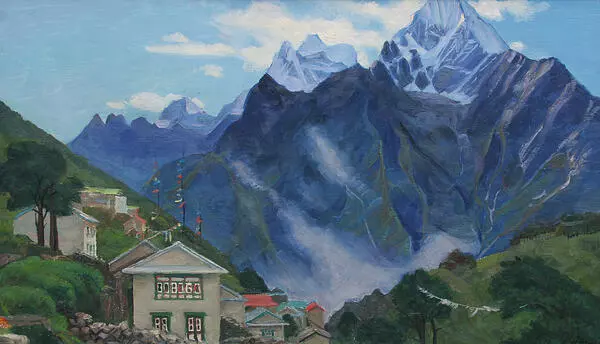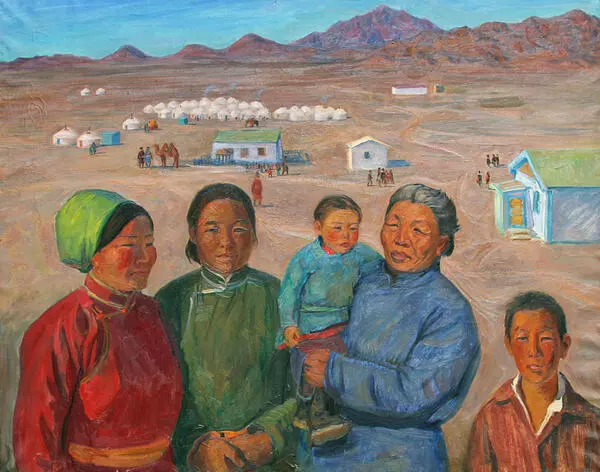The works of different genres by artist Afanasy Osipov are featured in the funds of the National Art Museum of the Republic of Sakha (Yakutia). Osipov is a painter, academician of the Russian Academy of Arts, People’s Artist of the USSR, winner of the Ilya Repin State Prize of the Russian Federation. He was born on February 28, 1928 in Gorny Ulus in Yakutia. After finishing school and technical school, Osipov went to Moscow where he entered the Moscow secondary art school at the Moscow State Academic Art Institute named after V.I. Surikov, and then entered the institute itself. The artist participated in many all-union and foreign exhibitions.
As a result of stylistic searches of the Yakut painter, the painting “Honored Coach of the USSR D.P. Korkin with Students (Churapchinskaya School)” appeared. The image of athletes occupies the entire lower part of the canvas. They are painted slightly above. This angle creates the effect of presence as if the audience is watching the training from the stands. The muscular figures of the body of young men in bright tights and their golden-yellow skin color in the painting are balanced by a light accent, i.e. white costumes of young students. There is Dmitry Korkin in the center. He is a Yakut Soviet freestyle wrestling coach and honored coach of the USSR. In the upper-right corner, there are athletic gear, i.e. suspended rings, close together, thus resembling five rings of the Olympic symbols. Thus, Afanasy Osipov emphasizes that it was Dmitry Petrovich Korkin who brought up the best world wrestlers of the first half of the 1970s, i.e. Olympic Champions Roman Dmitriev and Pavel Pinigin.
This is one of Osipov’s paintings created in a very short time. Thus, back in February 1971, while in Churapcha, he only collected full-scale material and developed the first versions of the composition that were interesting for their full-scale authenticity, but very far from the final version. And by the end of April, the painting was completed. The painting about everyday life and romance of Yakut athletes was successfully exhibited at the All-Union and International Art Exhibitions dedicated to the Munich Olympics in 1972, during which the newspaper ‘Sovetskaya Kultura’ noted that the work of the Yakut artist was one of the best at the exhibition. Also in 1971, this canvas was successfully presented at the All-Union Art Exhibition ‘Physical Culture and Sports in the Visual Arts’.
As a result of stylistic searches of the Yakut painter, the painting “Honored Coach of the USSR D.P. Korkin with Students (Churapchinskaya School)” appeared. The image of athletes occupies the entire lower part of the canvas. They are painted slightly above. This angle creates the effect of presence as if the audience is watching the training from the stands. The muscular figures of the body of young men in bright tights and their golden-yellow skin color in the painting are balanced by a light accent, i.e. white costumes of young students. There is Dmitry Korkin in the center. He is a Yakut Soviet freestyle wrestling coach and honored coach of the USSR. In the upper-right corner, there are athletic gear, i.e. suspended rings, close together, thus resembling five rings of the Olympic symbols. Thus, Afanasy Osipov emphasizes that it was Dmitry Petrovich Korkin who brought up the best world wrestlers of the first half of the 1970s, i.e. Olympic Champions Roman Dmitriev and Pavel Pinigin.
This is one of Osipov’s paintings created in a very short time. Thus, back in February 1971, while in Churapcha, he only collected full-scale material and developed the first versions of the composition that were interesting for their full-scale authenticity, but very far from the final version. And by the end of April, the painting was completed. The painting about everyday life and romance of Yakut athletes was successfully exhibited at the All-Union and International Art Exhibitions dedicated to the Munich Olympics in 1972, during which the newspaper ‘Sovetskaya Kultura’ noted that the work of the Yakut artist was one of the best at the exhibition. Also in 1971, this canvas was successfully presented at the All-Union Art Exhibition ‘Physical Culture and Sports in the Visual Arts’.

